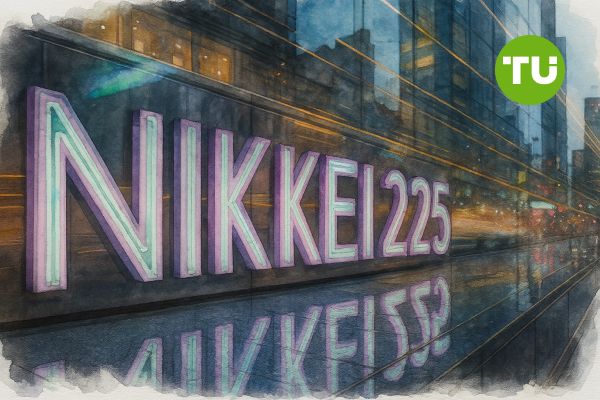Nikkei 225 index steadies near 39,800 as triangle pattern points to potential breakout
 Nikkei 225 rebounds toward triangle apex as bulls aim to break through 40,000 resistance
Nikkei 225 rebounds toward triangle apex as bulls aim to break through 40,000 resistance
The Nikkei 225 is trading near 39,780 on Monday, recovering modestly from a recent low at 39,628 after pulling back from its multi-decade peak near 40,900. Despite recent short-term volatility, the broader technical structure remains bullish, with the index holding above key exponential moving averages and consolidating within a symmetrical triangle pattern that suggests a breakout could be on the horizon.
Highlights
- Nikkei 225 trades near 39,780 after bouncing from 39,628 intraday low
- Symmetrical triangle on 4H chart signals potential breakout near 40,000
- RSI, MACD, and Parabolic SAR indicate improving momentum beneath key resistance
Price stabilizes above key EMAs as buyers defend lower range
On the 4-hour chart, price action has stabilized just above the 50 EMA at 39,675, with the lower Bollinger Band also providing support during last week’s dip. The 20 EMA at 39,810 is currently being tested, and a close above it could open the path toward 40,100–40,300. Long-term bullish structure remains intact with the 100 EMA and 200 EMA sloping higher from 39,274 and 38,638 respectively.

Nikkei 225 index forecast (Source: TradingView)
The index remains inside a symmetrical triangle bounded by lower highs from 40,900 and higher lows from 39,250. Price is now trading near the apex, where a breakout is statistically more likely. If bulls clear the descending trendline near 40,000, momentum could drive the Nikkei back toward its recent peak.
Momentum indicators support bullish bias
On shorter timeframes, technical indicators are turning in favor of buyers. The RSI on the 30-minute chart has rebounded to 59.68, while MACD lines are curling upward, with the histogram turning positive. A bullish crossover appears imminent. Parabolic SAR dots have flipped beneath the latest candles, and intraday price action has reclaimed the VWAP near 39,690 — both signs of improving sentiment.
In prior coverage, we highlighted the key triangle formation and the importance of the 39,250–39,400 support zone. That area has held firm once again, and price is now rotating back toward resistance. With EMAs rising and momentum improving, bulls appear to have regained short-term control — but the next move hinges on whether they can push through the 40,000 barrier.













































































































































